This is the second part of the story about the possible patterns of seasonal changes on exoplanets. Their configuration depend on a large number of factors: the distance to the star, the number of suns and the characteristics of the planet itself. They create an almost infinite number of options.
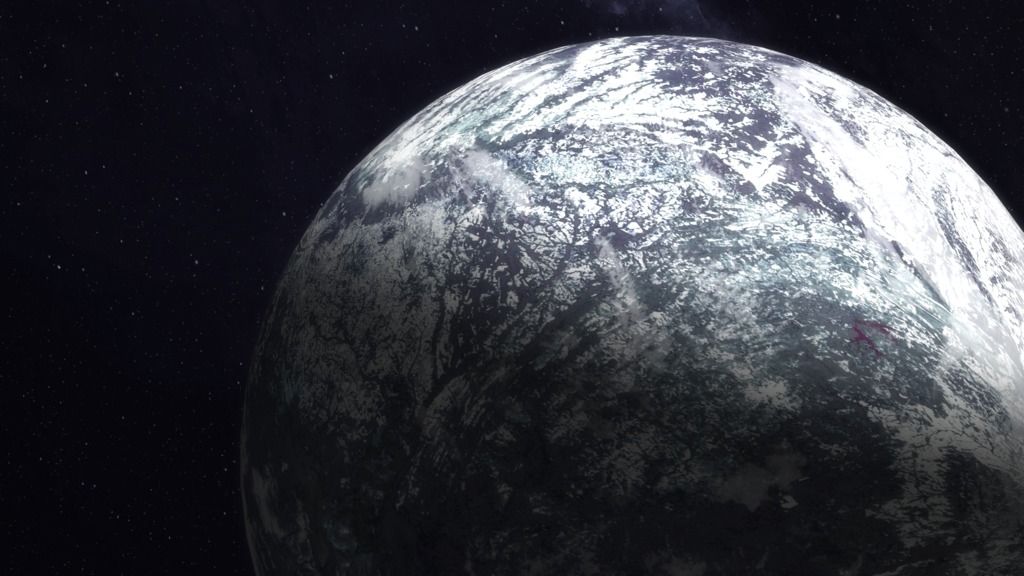
Habitable zone
Everything mentioned in the first part of the article is only some of the factors that can affect the change of seasons on exoplanets. After all, there may be situations that do not exist in the Solar System.
The example of Mars reminds us that in order for the change of seasons to occur in the way we are used to, it is necessary that the temperature range at least sometimes provides the conditions under which water changes its aggregate state.
If the planet is too hot, then water and other volatile compounds will be in a gaseous state under any changes in illuminance. If it is too cold, then even in the summer the water will remain in a solid state, so there will be no changes interesting for us.
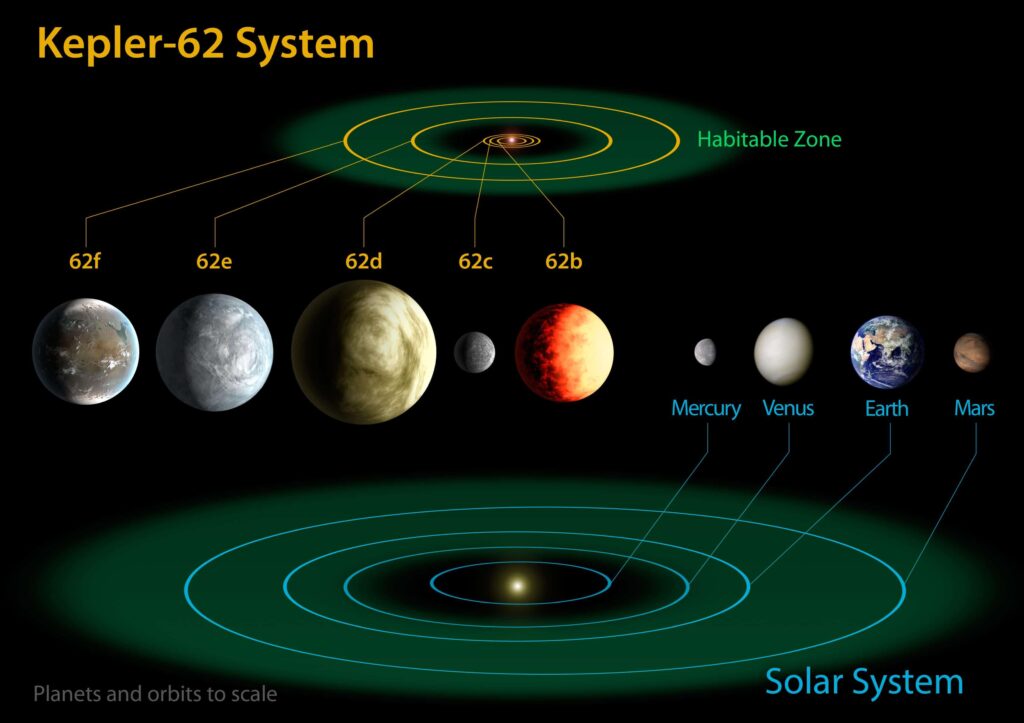
The range of distances from the star where a planet receives enough energy to keep water on its surface in a liquid state is called the habitable zone. It is not the same for different luminaries and depends on the power of their radiation.
Getting into the habitable zone does not necessarily mean that the planet has some rotation of seasons. Venus can be an example: despite the fact that this planet is near the inner edge of habitable zone in the solar system, its atmosphere is so dense and hot, that nothing like changing of seasons actually occurs there.
In addition, the situation is quite likely when the planet’s orbit has a high eccentricity so it falls into the habitable zone only partially. It can even pass through it in such a way that water is boiling in the perihelion, and all turning into ice in the aphelion.
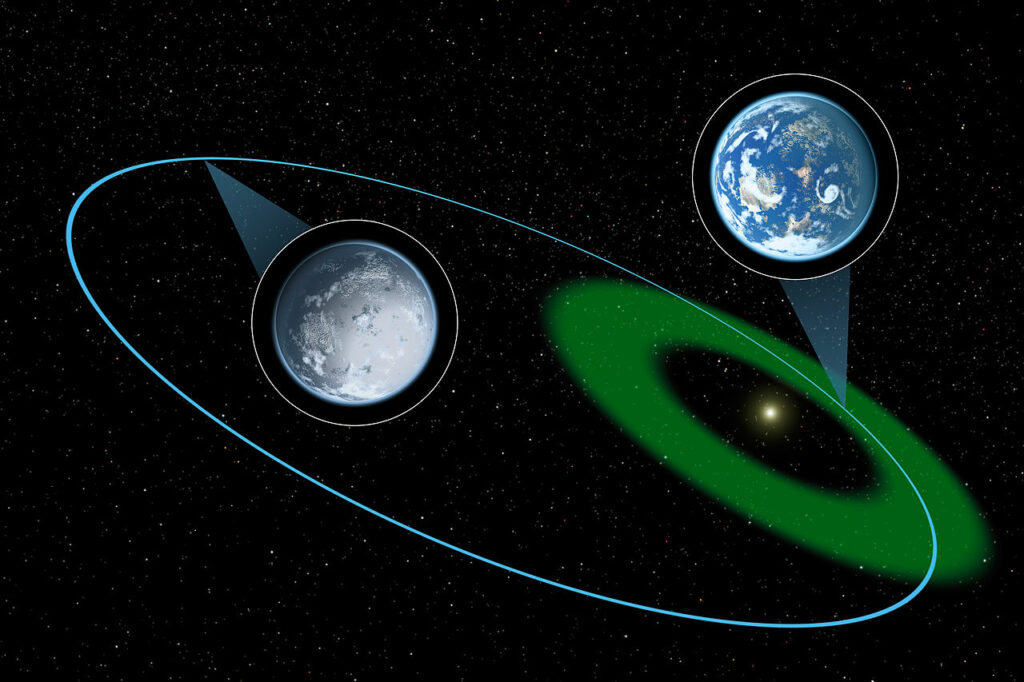
In all these situations, some change of seasons will be observed. But how exactly it happens depends on a huge number of parameters. We can only say with certainty that summer and winter in this case will be at once on the entire planet.
Length of the year and seasons
Another factor that strongly affects the change of seasons is thermal inertia. Heat tends to accumulate. That is, when an area is heated by the central star, the amount of energy there gradually increases.
The situation is similar with cold, but it must be remembered that it is only a lack of energy, and over time it is not the amount of “cold energy” that increases, but simply the energy reserves become smaller and smaller.
The atmosphere and hydrosphere of a planet have great thermal inertia. In order to warm them up by dozens of degrees, even with a sufficiently large amount of sunlight, more than a dozen days are needed. Remember how slowly the earth warms up in the spring.
In practice, all this means that in many cases the harshness of winter and the heat of summer depend on the time during which the planet receives a certain amount of energy. And therefore, the length of the year also strongly affects the change of seasons on the planet.
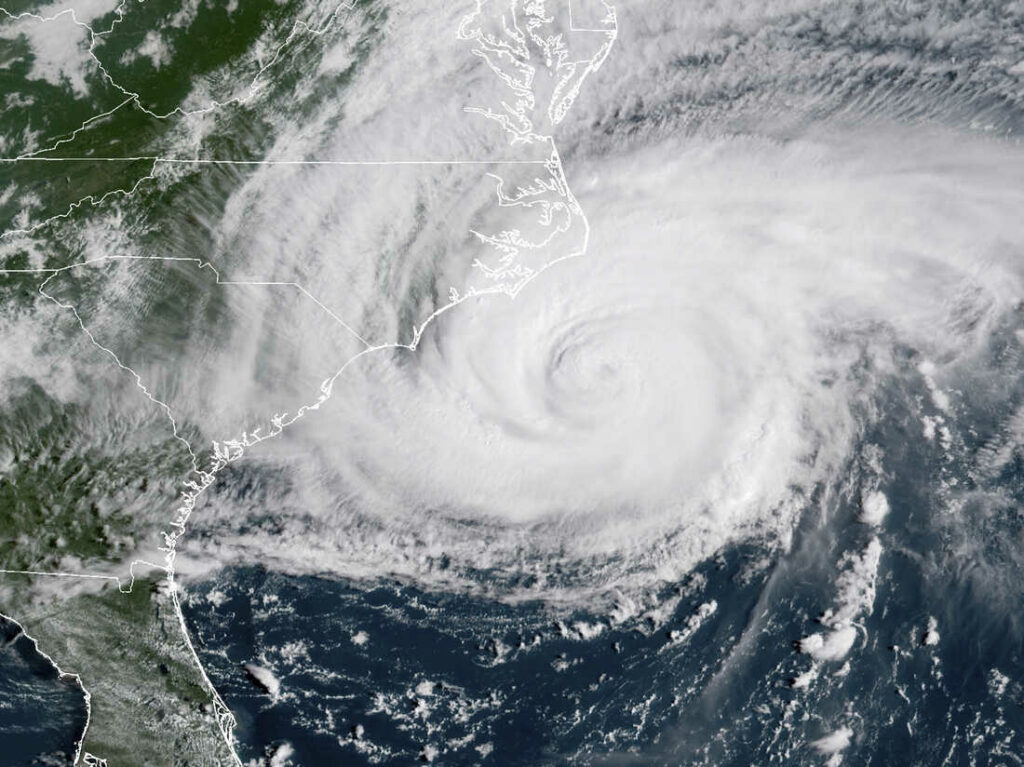
The fact is that most of the discovered exoplanets revolve around red and orange dwarfs. The orbit in the habitable zone for such stars corresponds to a period of rotation from 15 to several dozens of Earth days. Many of them simply do not have time to warm up or cool down enough, regardless of whether the change in season is caused by the inclination of the equator to the plane of the orbit or its eccentricity.
The shorter the length of the year, the smaller the annual temperature fluctuations should be, other factors being equal. For planets with a long orbital period, the opposite picture should theoretically be observed: the seasons there should be not only long, but also pronounced.
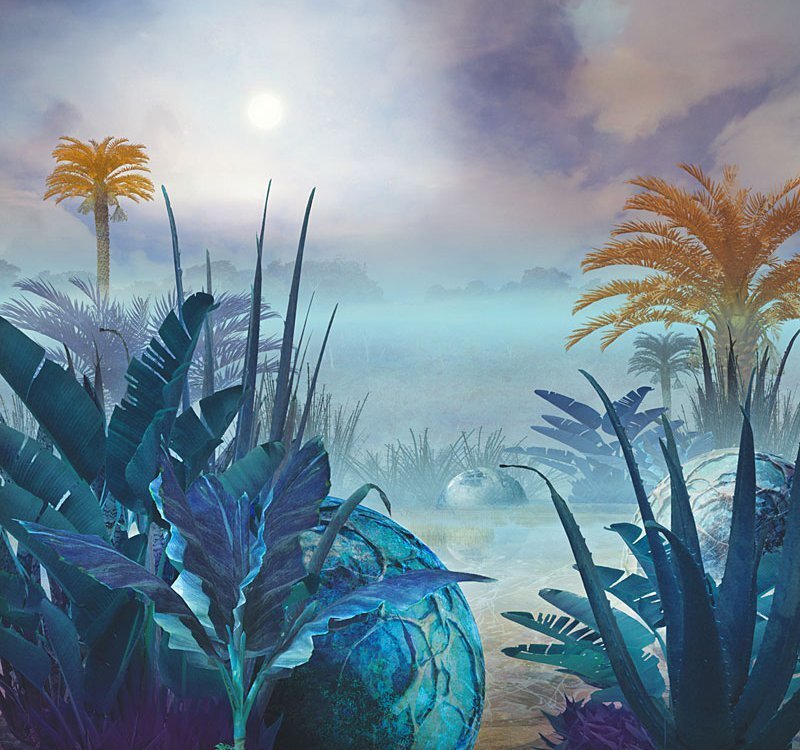
Change of seasons on exomoons
We should pay a special attention to possible conditions on potentially habitable satellites of exoplanets — the so-called Earth-like exomoons. Pandora from the Avatar movie is a vivid example of such a celestial body.
A large enough moon of a giant planet orbiting near the star’s habitable zone may indeed be habitable, although predicting its climate is much more difficult because the factors that affect the changing of the seasons become even more numerous.
As for the habitable zone itself, the eccentricity of the orbit and the length of the year, everything remains the same as in the case of an ordinary planet. But instead of the influence of the inclination of the equator to the orbital plane, two factors have to be taken into account at once: the inclination of the moon’s equator to the plane of its orbit and the angle between this plane and the orbit of the planet.
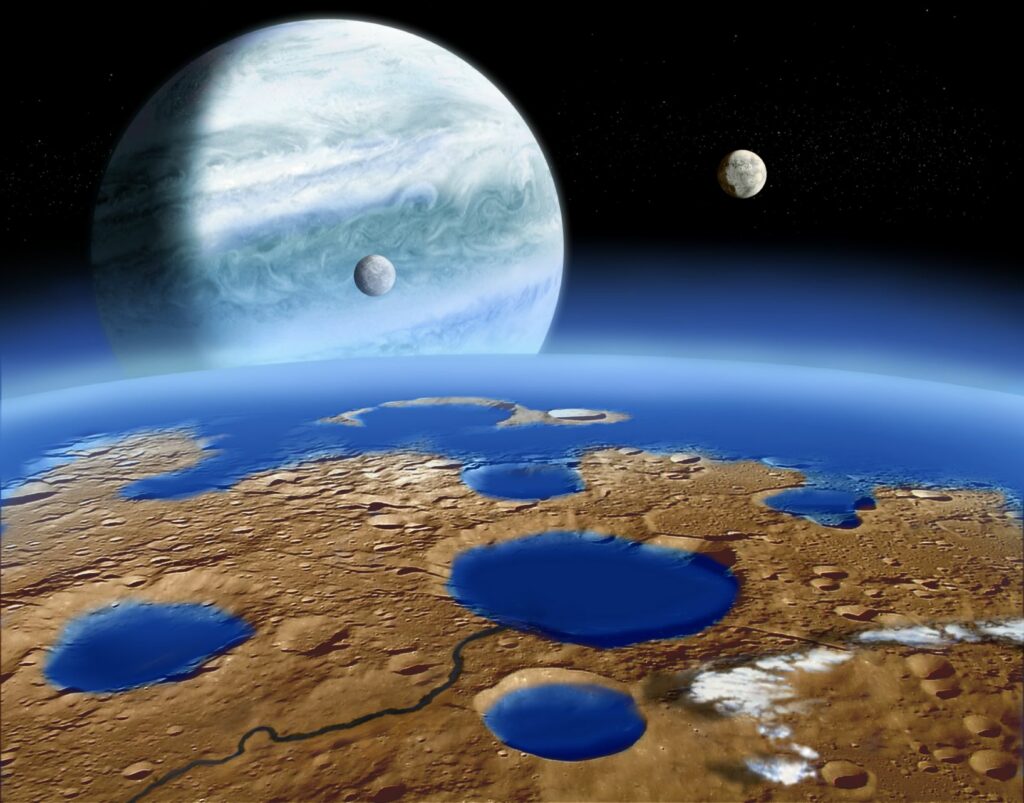
It should be remembered that the position of the axis of rotation of the exomoon remains unchanged relative to the plane of its own orbit, which itself is inclined to the orbit of the planet. Because of this, during its rotation around the giant, which can last several days or weeks, the illuminance of its hemispheres will change. In fact, this leads to the fact that changes similar to the onset of summer or winter can be observed on such a celestial body every month.
And this periodicity will be superimposed on the annual one, due to the fact that the inclination of the satellite’s orbit to the planet’s orbit also remains unchanged. Because of this, the small monthly cycle of changing seasons can be different at different times of the “big year”.
It is also worth mentioning the possibility that the satellite’s orbit lies exactly in the plane of the planet’s orbit. Then the gas giant will regularly organize eclipses of the local sun lasting several days.
They can especially strongly influence the change of seasons, if the main cause is the eccentricity of the orbit and summer comes at the moment when the planet passes perihelion. If at this time its satellite hides behind the planet for a few days, this may lead to a difference between the conventional “eastern” and “western” hemispheres. In one of them, the summer will be significantly hotter.
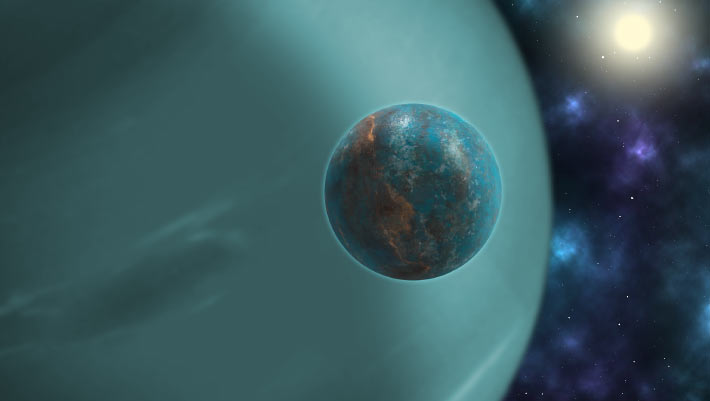
The change of seasons near the double stars
Another interesting option is the planets of double stars. Modern studies say that according to the nature of the orbits, they can belong to two different categories. The P-type revolves around two luminaries at once (more precisely, around their common center of mass). These are mostly planets in close star systems.
Exoplanets orbiting only one of the stars belong to the S-type. In order for such a world to enter the habitable zone, these must be sufficiently wide systems. The distance between components in them can be measured in astronomical units.
In most P-planets, there will be no special difference in the rules of changing seasons. The same combinations of the angle of inclination of the equator to the ecliptic and the eccentricity of the orbit constitute the decisive factors there. This is due to the fact that a pair of luminaries will be quite weakly different from one with the same total power.
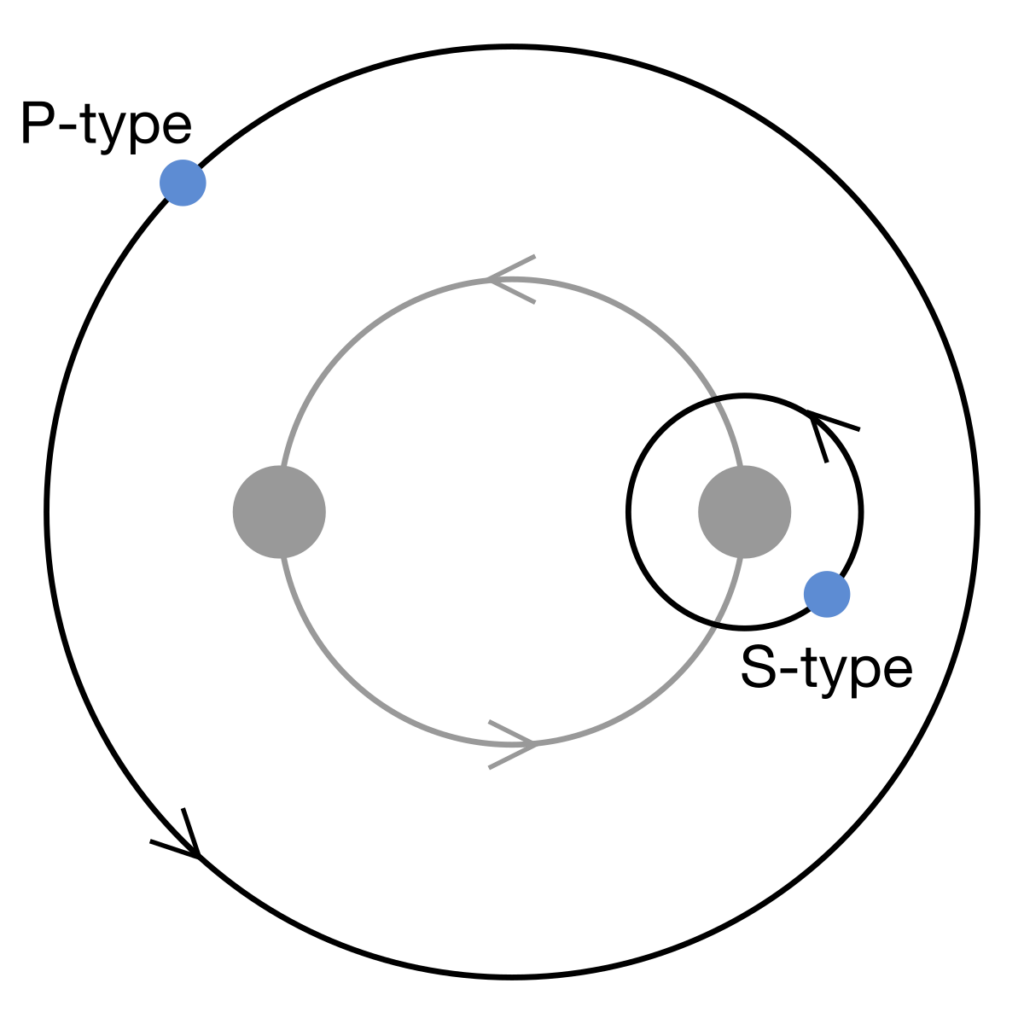
The only significant difference here may be the much longer duration of the year. After all, a pair of stars is able to support an inhabited zone much longer than a single luminary of the same power. This is due to the fact that large stars evolve much faster.
For S-planets, the main factor in changing the seasons on them will be the star around which they immediately rotate. Its companion will in most cases be too far away to provide noticeable influence. Therefore, the above described regularities for the case of a single light source will be relevant.
Significant difference can be caused by the case when the stars revolve around each other in an eccentric orbit. Then the distance between them changes significantly. As a result, time to time change in seasons on the S-planet will still be heavily influenced by the second luminary in the system.
Specific scenarios again depend on the parameters of the orbits and the stars themselves, but in general it is not difficult to reconstruct how this could happen. The cycle will last several decades, or even centuries. During most of it, the second luminary will have the appearance of the brightest star in the sky, visible even during the day — significantly exceeding Venus in the Earth’s sky in brightness. But once during this period it will grow to the size of a small disk for several years, due to which all the cycles of day and night will go astray, the climate will warm significantly, and winter may not come for some time.
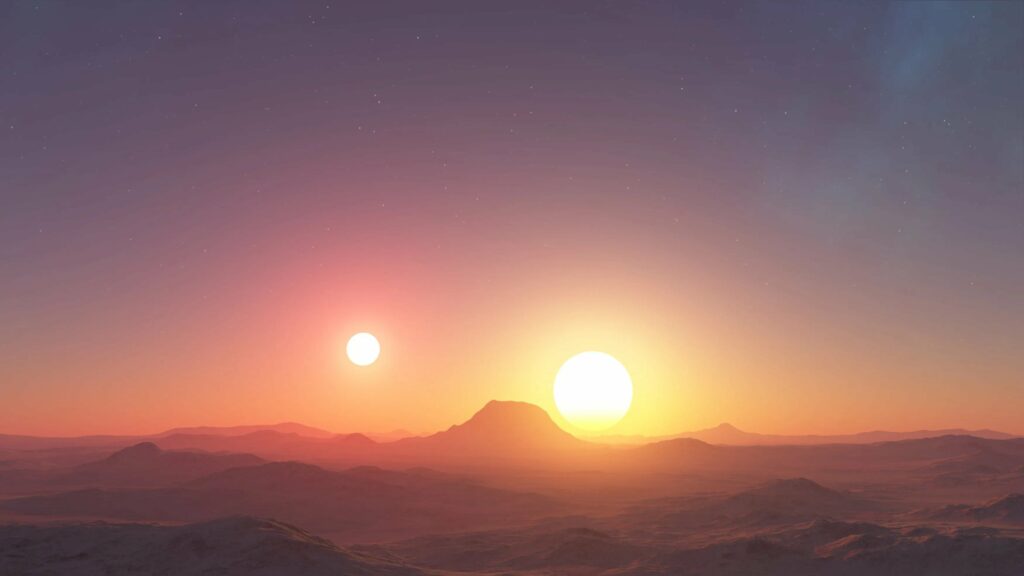
The role of the atmosphere
All of the above describes climatic changes exclusively due to the intensity of the planet’s irradiancy by the light of its star. However, in reality, the planet’s climate is much more complex and cannot be described by these simple rules.
At least for Earth-like planets that might be home to human-like beings, the influence of three planetary envelopes must be considered: the atmosphere, the hydrosphere, and the lithosphere.
The first two of them act simultaneously as an energy store and conductor. The more powerful they are, the more they tend to absorb heat, which is then redistributed around the planet with winds and currents.
At the same time, a too powerful atmosphere can completely cancel out all seasonal fluctuations, especially those caused by the inclination of the equator to the plane of the orbit. Venus is a good example here, having such a dense atmosphere that the winds instantly smooth out any irregularities in the weather.

Land, unlike water and air, cannot transfer energy, but it accumulates it quite well. Because of this, large continental masses act as amplifiers of seasonal fluctuations: they heat up a lot in summer and cool down in winter. On Earth, this leads to the formation of continental type of climate, when +30°C in summer and -30°C in winter occur even in fairly low latitudes. But the history of our planet also tells us about the opposite development of events.
In the Triassic and Jurassic periods, the continents were arranged in such a way that there was an ocean at the equator and poles. Its currents spread heat almost evenly across the globe. As a result, the tropical climate prevailed almost everywhere, and only near the poles it changed to subtropical and temperate.
At the same time, the astronomical signs of the onset of winter — a short daylight in temperate latitudes and a polar night in the Arctic and Antarctic — did not disappear anywhere. Because of this, it was possible to observe a picture of lush thickets of ferns in the middle of a long polar night.
Thus, the astronomical and real changes of seasons are sometimes completely different things. There are many factors that influence their rotation. They can form dozens of different combinations, each manifesting in its own way. It is possible that somewhere out there the change of seasons cannot be distinguished from the one we are used to in the Northern Hemisphere. But, most likely, this picture is very different on most exoplanets.

